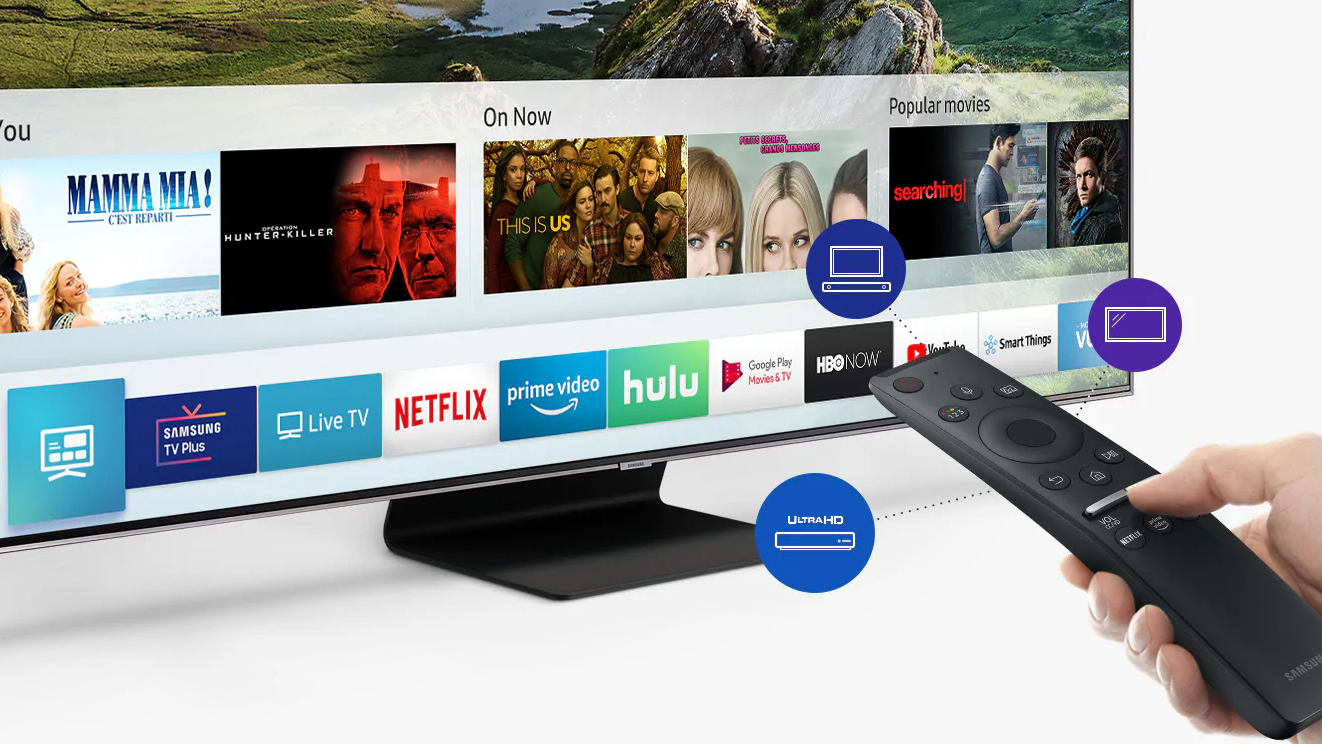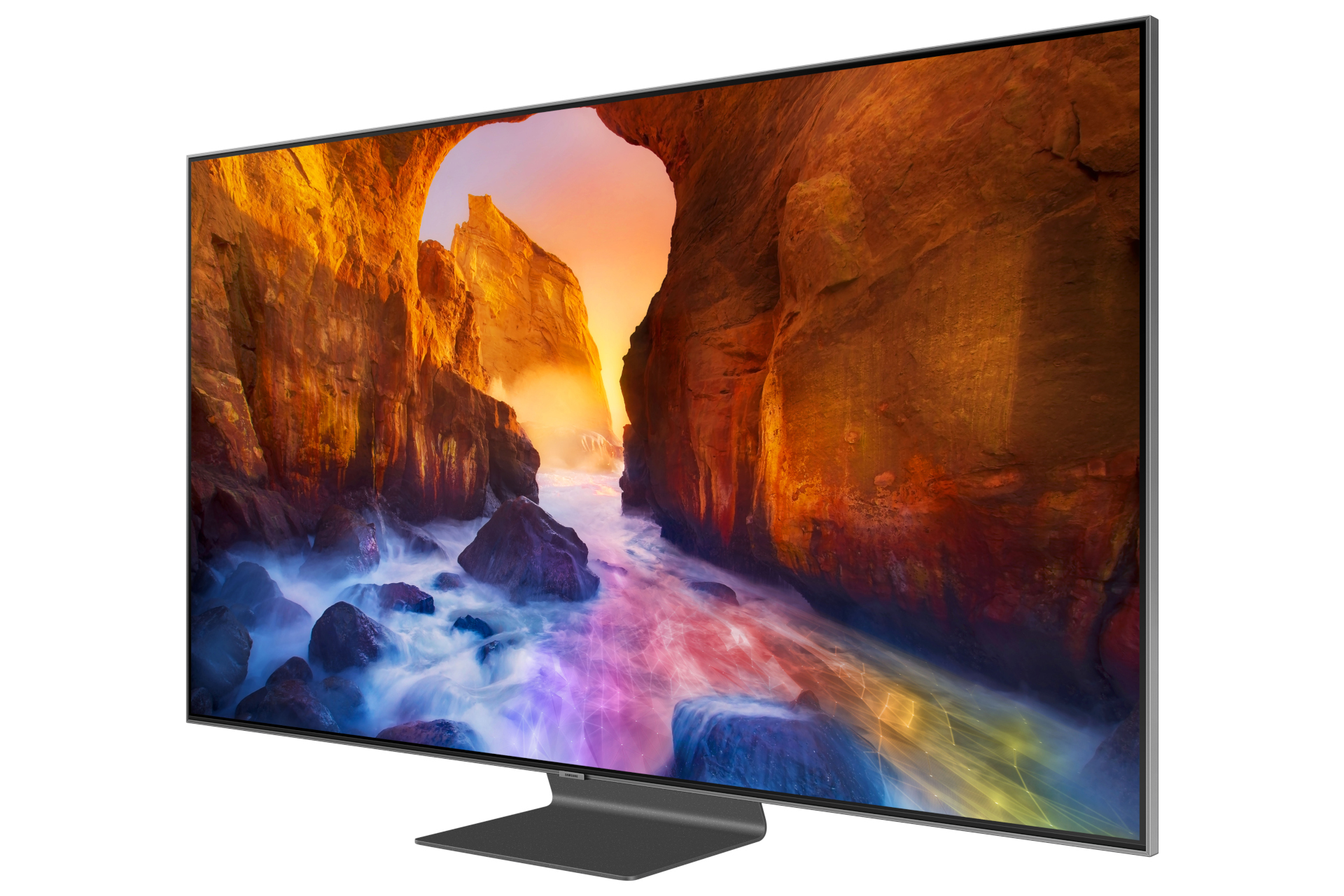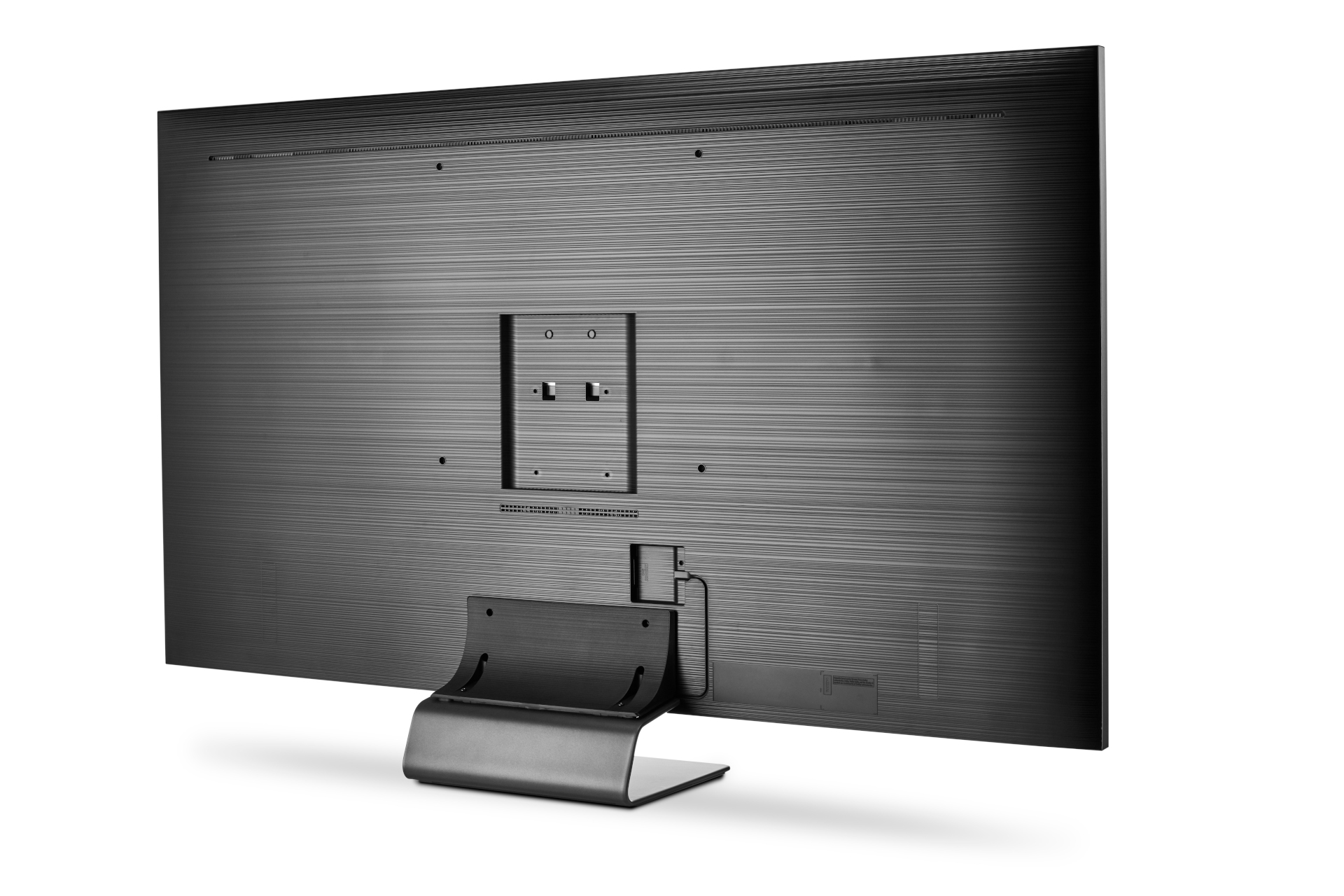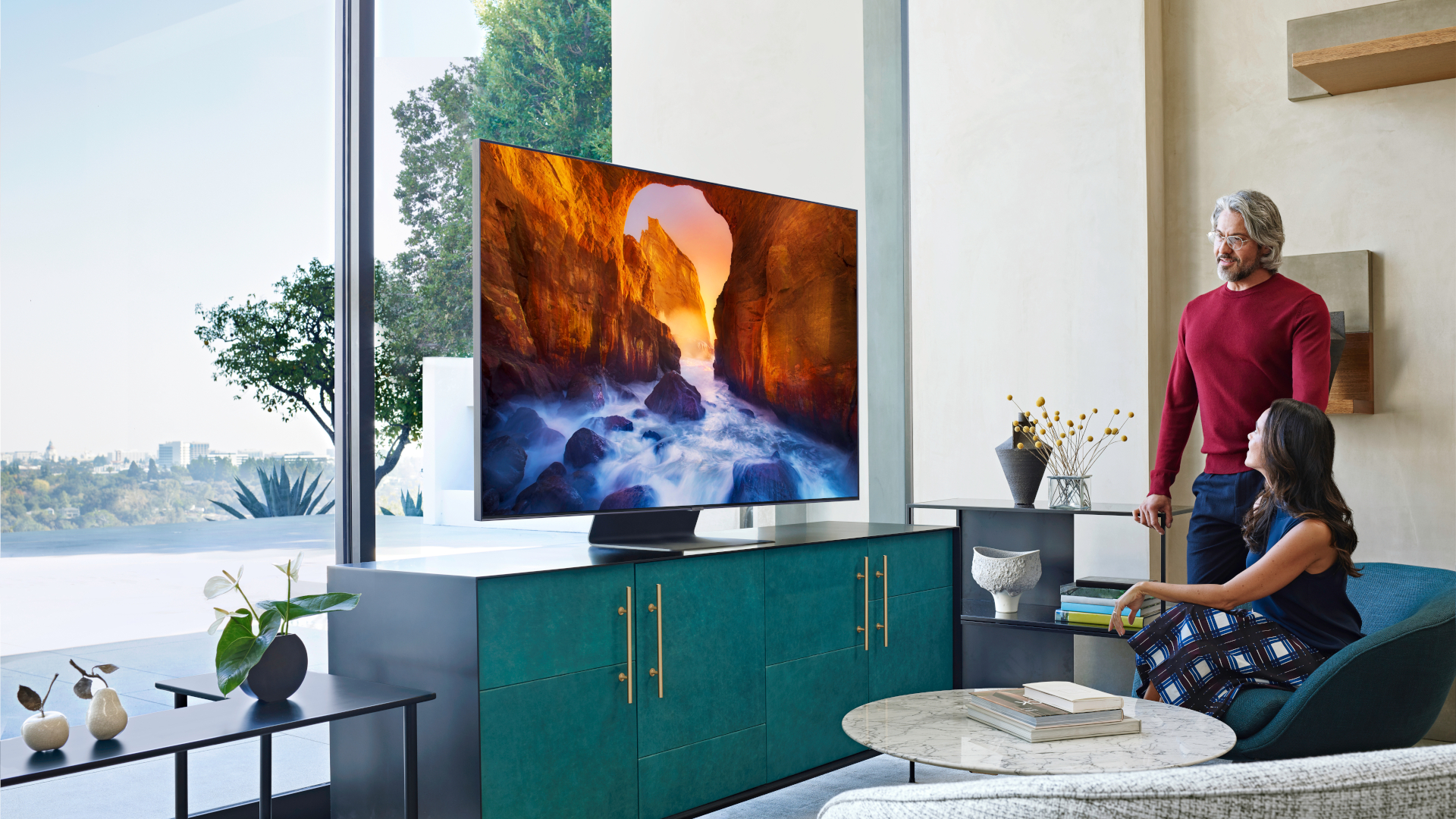TechRadar Verdict
The Samsung Q90 is easily the most impressive QLED we have reviewed to date, incorporating comprehensive features and cutting-edge picture innovations. As a result, this TV can deliver a performance that is capable of competing with and often surpassing even the best OLEDs.
Pros
- +
Superb picture quality
- +
Incredible HDR performance
- +
Wider viewing angles
- +
Comprehensive smart platform
- +
Attractive design and well built
Cons
- -
No Dolby Vision support
- -
No Dolby Atmos speakers
Why you can trust TechRadar
Samsung’s attempts to innovate and evolve LCD technology have been surprisingly successful. While its big Korean rival LG has invested billions developing OLED, Samsung has taken the view that LCD and ultimately MicroLED are necessary to deliver today’s ultra-bright HDR content.
Mainstream MicroLED might still be a few years off but Samsung has made significant advances when it comes to LCD, a technology that’s decades old. The company has been incrementally addressing certain limitations in LCD panel design, creating a superior product through various innovations.
These have included VA panels, direct LED backlights and local dimming for better blacks, brighter highlights, and a superior contrast performance. More recently Samsung has embraced quantum dot technology, which has resulted in more colors and put the Q into QLED.
Now the company feels it has conquered the last big limitation of LCD, and widened the optimal viewing angles. It's these innovations that spawned the TV brand's flagship TV for 2019: the Samsung Q90R.
But can a QLED TV beat out OLED? Let’s put this new flagship TV through its paces and see if Samsung succeeds in its goal of delivering the best QLED to date – and the best TV of 2019 too.
- What is QLED? Samsung's panel tech explained
Samsung Q90 price and release date
In the UK, the Q90 comes in four screen sizes: 55-inch (QE55Q90R), 65-inch (QE65Q90R), 75-inch (QE75Q90R), and 82-inch (QE82Q90R).
In the US, the Q90 is available in only three sizes – the 65-inch QN65Q90RAFXZA, the 75-inch QN75Q90RAFXZA and 82-inch QN82Q90RFXZA – with pricing currently sitting at $2,599 (down from $3,499) for the 65-inch model.
In the UK, however, there's a 55-inch version starting at just £1,699, with 65-inch and 75-inch sizes too.
Pricing and availability for Australia, India and the UAE is TBD, but we'll update this review when we learn more.

Design
The Samsung Q90 continues the company’s 360-degree design ethos with a minimalist appearance that looks good from all angles. There’s a simple elegance to the bezel-less screen, and a fetching brushed metal trim around the outer edge. The back panel has textured grooves that not only make the rear view prettier but also help hide the cable that connects the One Connect box.
The Q90 sits on a fairly traditional stand that provides solid support and complements the overall styling. The smaller size is also sure to please anyone hoping to position this TV on an existing equipment stand. If you’d prefer to wall mount there’s a removable panel at the rear, behind which there are fixings for the optional ‘No-Gap’ bracket. Just remember this well made TV is heavy.
There’s literally only one connection on the rear of the Q90, everything else is in the One Connect box. Here you’ll find four HDMI 2.0b inputs, three USB ports (two 2.0 and one 3.0), twin terrestrial and satellite tuners, a CI slot, an external link for auto calibration, an optical digital input and a LAN port for a wired connection (although there’s also built-in WiFi and Apple AirPlay).
Interestingly the Q90 doesn’t support HDMI 2.1, but can still do everything you’re likely to need. So there’s 4K at up to 120Hz, dynamic metadata (HDR10+), variable refresh rate (VRR), and an auto low latency mode (ALLM). The Q90 doesn’t currently support an enhanced audio return channel (eARC), but that isn’t necessary at the moment and could be added later.
The included remote control uses the same attractive metal construction and ergonomic design as last year, making it comfortable to hold and easy to use with one hand. There’s a microphone for voice control, and Samsung has now added direct access buttons for Netflix, Amazon and Rakuten along the bottom.
Design TL;DR: The design remains attractive, the stand is more practical and the remote has a few added buttons. The One Connect box is still a great idea and despite the absence of HDMI 2.1 it supports everything you need.

Smart TV
The Samsung Q90 uses the latest iteration of the company’s smart platform, and it’s largely the same as last year in terms of layout. There’s a launcher bar along the bottom and a second layer that provides quick access to the various video streaming services.
Since a TV’s main purpose is to watch content, the more video streaming services a smart platform supports the better. And in that regard, Samsung has the lot, with apps for Netflix, Amazon, Now TV, Rakuten, YouTube, and all the UK TV catch-up services. If that wasn’t enough, the company has even made up with Apple and will be exclusively adding an iTunes app later this year.
With all this content there’s a danger of information overload, so Samsung has wisely added a Universal Guide. This new feature is designed to collate all your favorite games, movies, sports, and streaming services into a single user-friendly interface.
Content that can be accessed via the smart system is included in the Universal Guide, and it uses AI machine learning to analyse your viewing patterns to create a single ‘For You’ page with personalized content to suit your tastes. This feature works really well, and the more time it has to analyze your behavior, the better the recommendations become.
There are plenty of ways of controlling the Q90, including the provided remote and the SmartThings app. The latter can also be used to set-up your TV and is available for both iOS and Android. The SmartThings app also enables you to use your TV as hub, allowing you to sync, share, control, and connect with other smart devices in your home.
If that wasn’t enough, you can also control your TV using the built-in Bixby smart assistant. This feature can be accessed by either pressing the microphone button on the remote, or simply saying “Hi Bixby”. We found using the mic on the remote worked best, avoiding any confusion caused by ambient noise. However both allowed us to control the TV and ask Bixby questions.
If you don’t want to use Bixby the Q90 is also compatible with Amazon Alexa, Google Assistant, and thanks to the inclusion of AirPlay even Apple’s Siri, which means the TV can be voice controlled using all the major smart assistants.
Finally the Q90 includes the latest version of Samsung’s Ambient mode. This features enables your TV to blend in with its surroundings, providing images and information when you’re not actually using the TV. This lifestyle feature now has dozens of different designs and images, and you can even use family photos if you prefer.
Smart TV TL;DR: Samsung’s smart system is a sophisticated and comprehensive platform that now includes iTunes, a Universal Guide, and Bixby voice assistant.
HD/SDR Performance

Screen Sizes: 55-, 65-, 75-, and 82-inches | 4K: Yes | HDR: Yes | Panel technology: QLED | Smart TV: Yes | Curved: No | Dimensions: 1450 x 922 x 284mm (WxHxD) | Weight: 35kg | 3D: No | Inputs: 4xHDMI, 3xUSB, 2xRF, optical, Ethernet, CI slot
The Samsung Q90 delivers a fantastic level of picture quality right out of the gate. The combination of a direct LED backlight, highly effective local dimming, and the new Ultra Black Elite filter results in images with exceptional contrast. This superb dynamic range is delivered without crushing shadow detail, and thanks to the filter’s remarkable abilities it can deliver this contrast performance regardless of whether the room is brightly lit room or in total darkness.
The colors are natural, and the AI-enhanced image processing upscales lower resolution content with remarkable precision. The screen uniformity is also excellent, with none of the banding or clouding that often affects LCD TVs. The Ultra Viewing Angle technology is simply a revelation, with none of the contrast or colour degradation you associate with LCD as you move off-axis.
In short the Q90 produces the best images we have seen from a QLED TV, pictures so good they can hold their own against any OLED. Watching scenes from Gravity, the Q90’s local dimming delivers the blacks of space without crushing and the white EVA suits without clipping. The stars are perfectly defined and the sudden changes in contrast are handled with skill.
The same superb performance applied to the Blu-ray of Samsara, with stunning images that are bursting with bright colours and exceptional detail. The image processing is state-of-the-art, especially when fed a quality source but there are some handy noise reduction features for lower quality sources as well.
The motion handling is good for an LCD TV, and there are plenty of useful motion settings that can help smooth things out. This is particularly helpful with fast-paced sports, while the black frame insertion is effective at improving the motion handling for movies. If you’re a gamer the 14ms input lag means the only limiting factor will be your own reactions.
HD/SDR Performance TL;DR: The SDR performance is superb, with natural colors, deep blacks, great shadow detail, bright highlights, wide viewing angles, and a 14ms input lag.

4K/HDR Performance
The Samsung Q90 is even more impressive when it comes to high dynamic range (HDR) content, delivering some of the best images we have seen to date. All the elements that made the SDR performance so good, apply just as much here - the blacks remain inky and the shadows detailed thanks to local dimming that can effectively compete with the self-emissive nature of OLED.
However unlike an OLED, the Q90 can go much brighter. We measured the peak highlights at 1,600 nits, which is twice as much as the best OLEDs. The color space is nearly 100% of the DCI-P3 target, while the accuracy and tone mapping are genuinely impressive. The result is an HDR image that perfectly replicates the content creator’s intentions with deep blacks, bright highlights and accurately saturated colors.
A disc like Planet Earth II is a riot of color and detail, with the Q90 able to deliver the daylight sequences with plenty of accuracy and suitably blinding highlights. A difficult scene like the hyenas at night is equally as impressive, with deep blacks, plenty of shadow detail and almost no blooming. The increased resolution of the Ultra HD Blu-ray also gives the Samsung a chance to make full use of its native 4K panel.
The Q90 supports HDR10+, which is an open-source version of HDR that uses dynamic metadata on a scene-by-scene basis. This approach ensures that regardless of the display’s capabilities, the HDR images always reflect the content creators intentions. Watching recent HDR10+ releases like Bohemian Rhapsody and Bad Times at the El Royale revealed the format’s full capabilities. The images are incredible with subtle improvements in color and contrast thanks to the dynamic metadata.
Samsung has added a new feature to actually identify when the TV is showing HDR10+ content. This worked with something like The Grand Tour on Amazon (which looked gob-smackingly good by the way) but doesn’t yet work when displaying HDR10+ content from a 4K disc. The only real criticism you can level at the Q90 is that is doesn’t support Dolby Vision (a proprietary version of HDR that also uses dynamic metadata), putting it at a disadvantage to some of the competition.
4K/HDR Performance TL;DR: The Q90 builds on the excellent SDR performance, adding brighter highlights and wider colors to deliver one of the best HDR experiences to date.

Sound
The Q90 uses a direct LED backlight, which means it’s deeper than most of today’s ultra-thin TVs. One useful side effect of this extra depth is that Samsung can squeeze four speakers, two subs and 60W of amplification into the panel. As a result the Q90 delivered an excellent audio performance with good stereo separation, well-defined midrange and higher frequencies, clear dialogue and deeper bass.
This year Samsung has also added some machine learning to the TV’s audio, with the Intelligent Sound mode adjusting the audio depending on the environment and content. This gives the sound emanating from the TV more width and depth, and optimizes the speaker output to deliver an experience that is better defined and more immersive.
As soon as you turn on Intelligent Sound the audio bursts into life and when watching a football match the commentary remains clear but the crowd is far more enveloping. With a movie the music and effects are clearly defined, while dialogue remains focused on the screen. If you’re playing a game the processing places effects around the front of the room with precision.
Unlike many other TVs on the market the Q90 doesn’t support Dolby Atmos, which might put it at a disadvantage. To be honest there’s only so much a TV with stereo speakers can really do to deliver an object-based mix, but importantly the Q90 can send Dolby Atmos from built-in apps like Netflix to supporting soundbars via the HDMI audio return channel.
Sound TL;DR: The sound quality is genuinely good for a modern TV, and the addition of AI processing results in audio that automatically adapts to the content and the room.
Final verdict
Last year the Samsung Q9FN won plaudits galore for its features and image quality. However it wasn’t perfect and there were legitimate complaints about viewing angles and an over-aggressive local dimming system that crushed detail just above black.
Samsung has clearly taken these criticisms to heart, and directly addressed them in the Q90. The new model has a visibly superior viewing angle that holds its own against an OLED TV, and the local dimming delivers deep blacks without losing shadow detail. To that end, the new Ultra Black Elite filter is nothing short of a revelation, rejecting ambient light in a way that just staggers belief.
Throw in the superb image processing with its AI learning algorithms and you have the best QLED TV that Samsung has produced to date.
How does it fare against OLED?
The Q90 is able to deliver images that can directly compete with an OLED, with natural colours, bright highlights, deep blacks, and well defined shadows. It can also surpass any OLED when it comes to HDR, with images that are often breathtaking in their detail and dynamic range.
In fact our only real criticism would be that unlike some of the competition, the Q90 doesn’t support Dolby Vision. However in all other respects the Samsung Q90 is an absolutely stellar TV that takes QLED to another level.
- Curious about Samsung's other 2019 TVs? Here's the entire Samsung 2019 TV lineup
- Get the best deal on Samsung products with our Samsung coupon codes.

Stephen is a freelance reviewer with over ten years experience writing for all the major tech publications. As a lifelong film fan he’s embraced the evolution of home entertainment over the decades, and as a professional audio and video calibrator he’s able to keep abreast of the latest developments and innovations. When not reviewing the latest products, Stephen can be found obsessing over how to cram a bigger screen and more speakers into his own home cinema.
